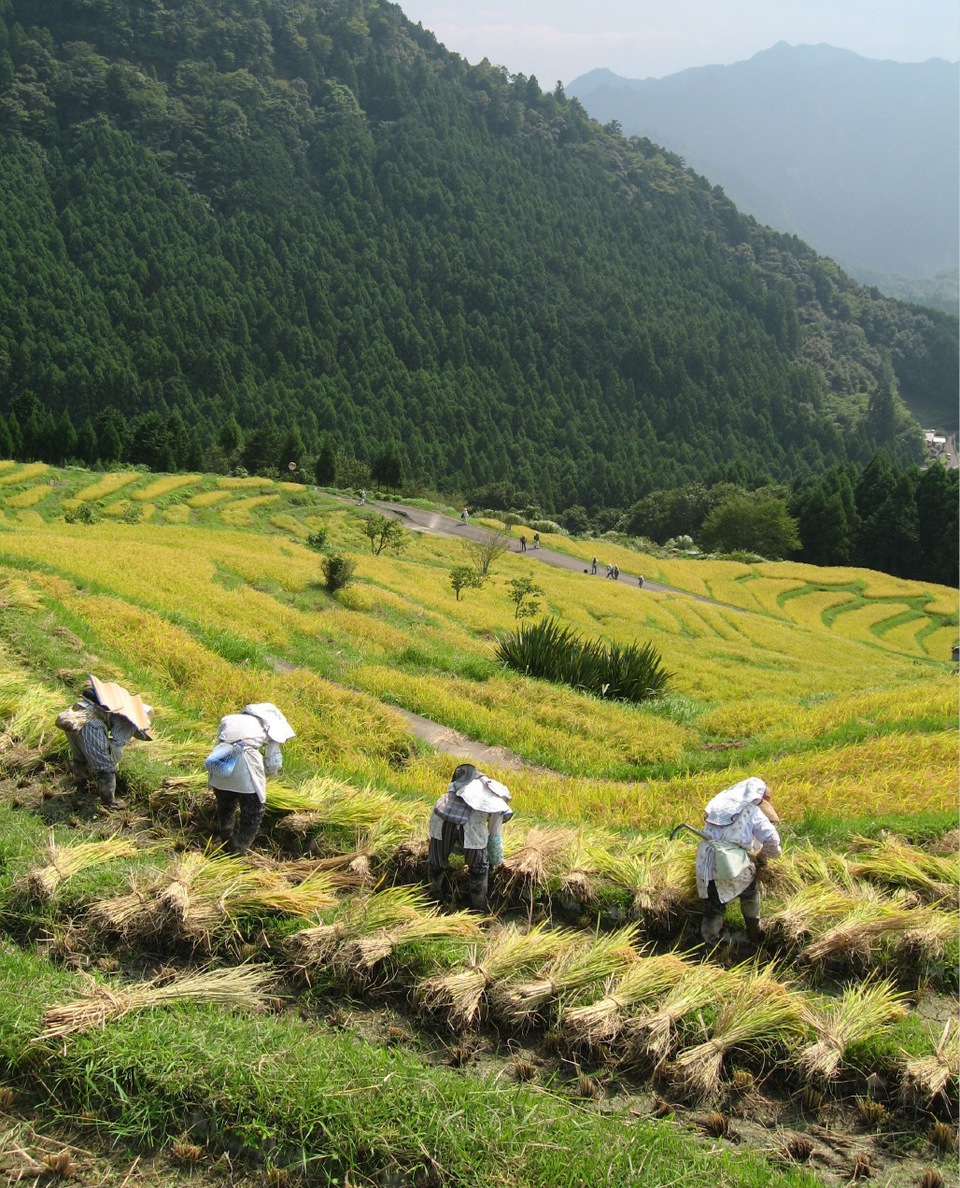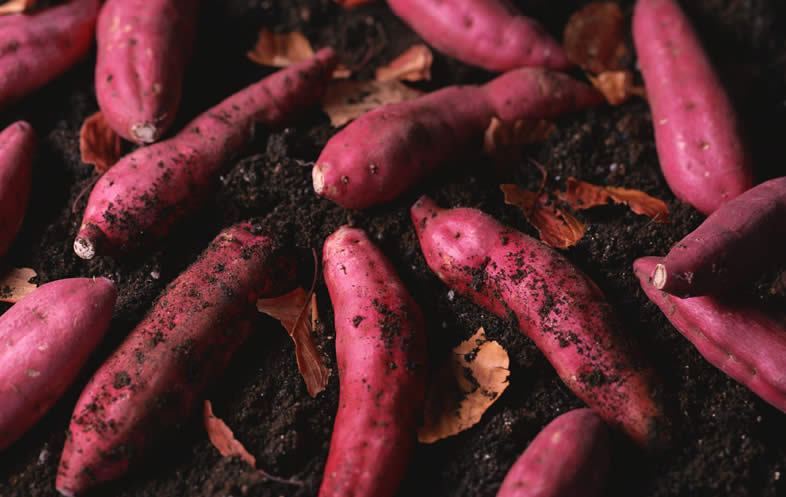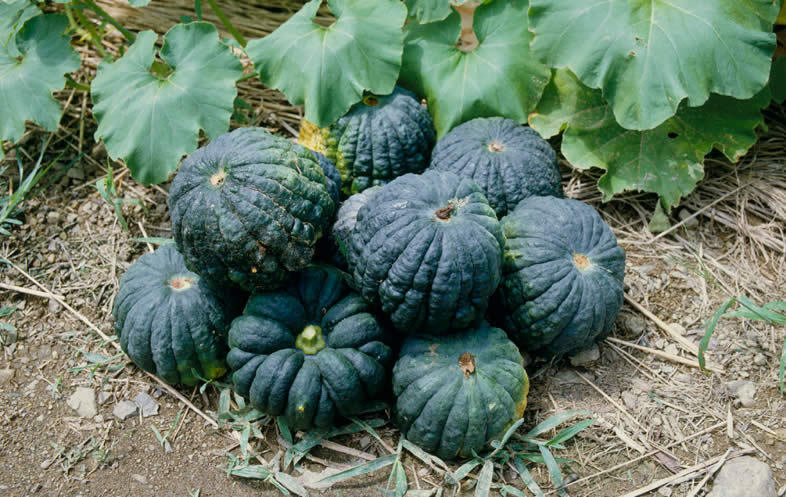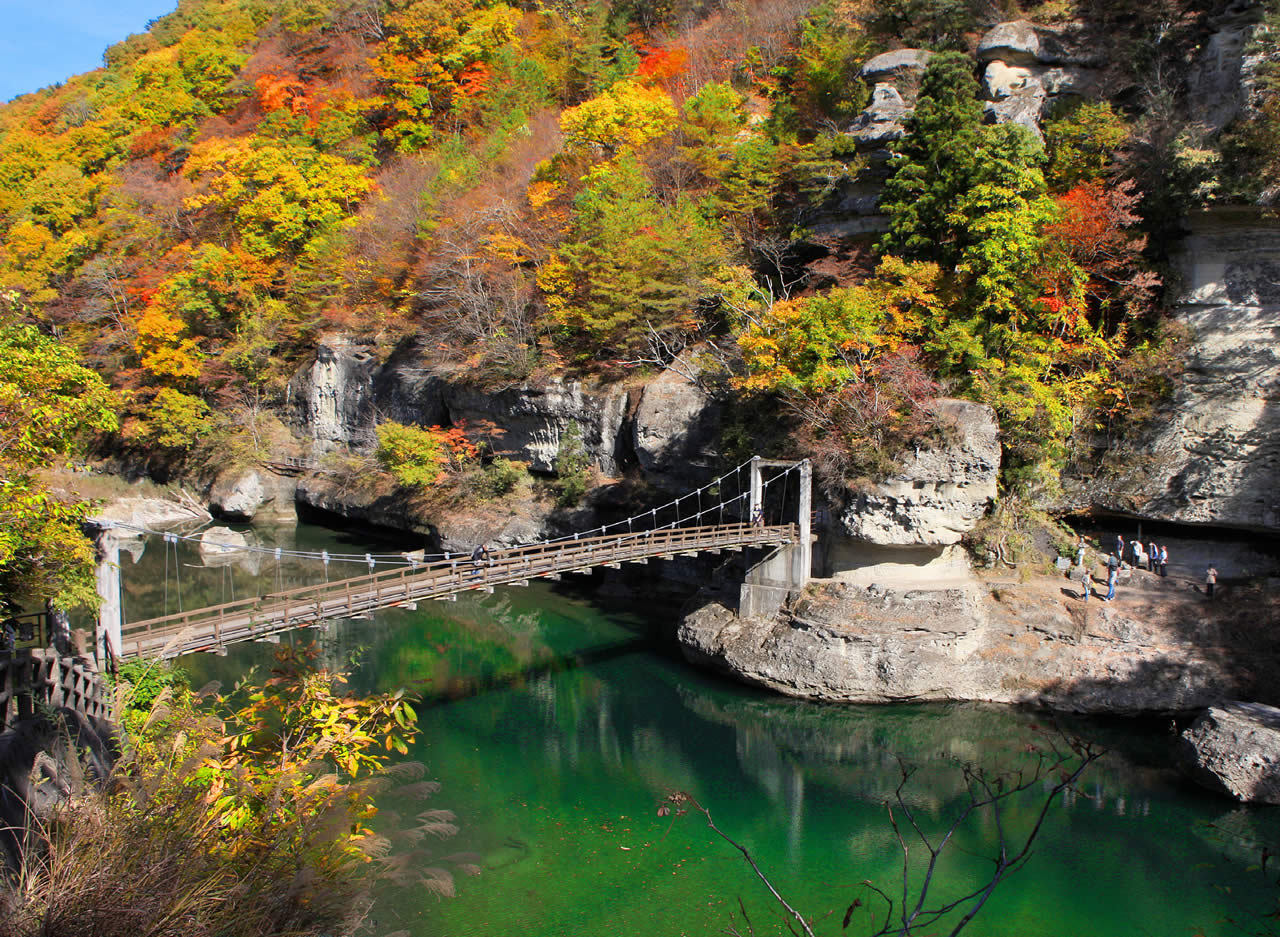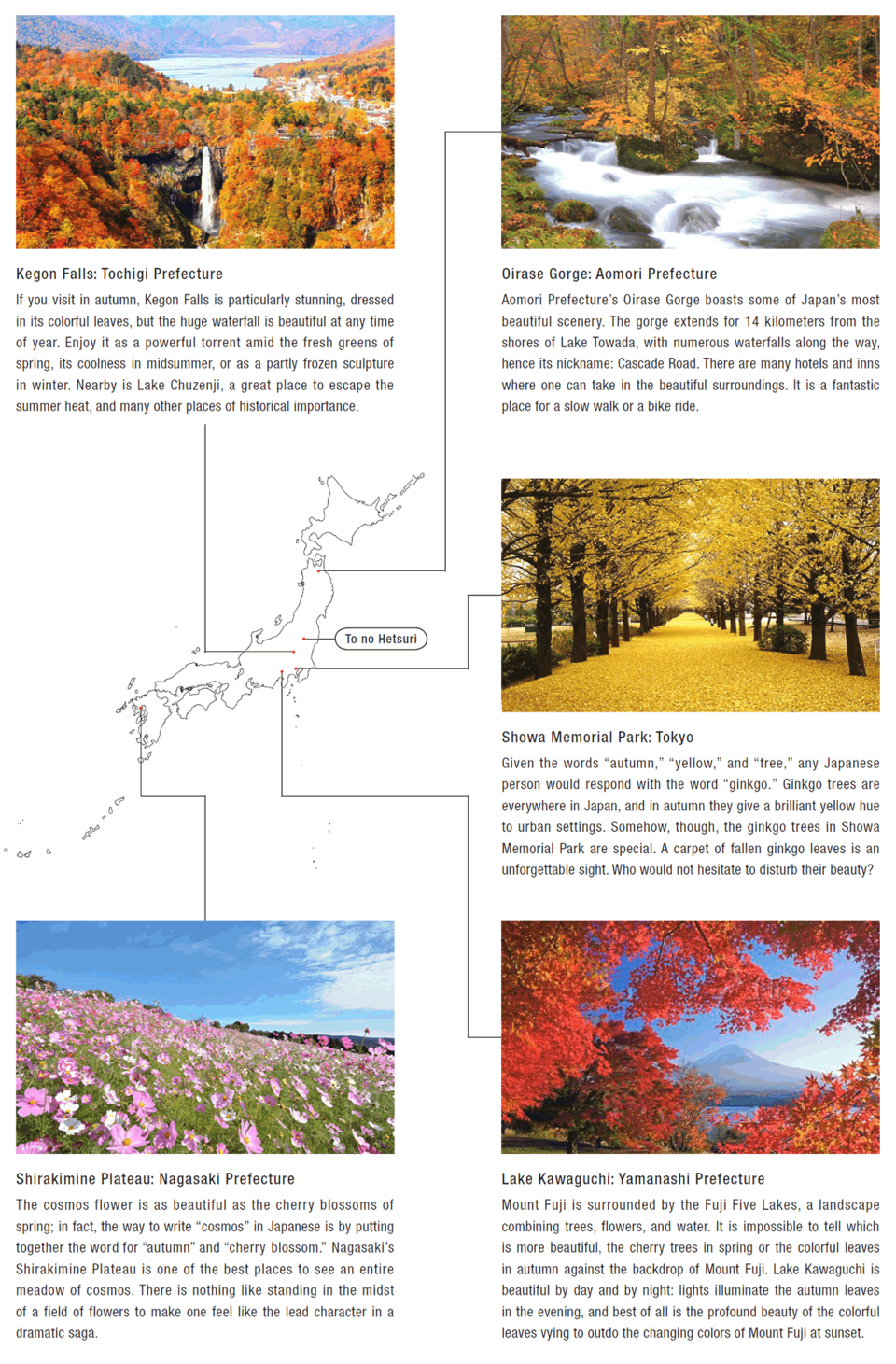Japan is blessed with four seasons, which Japanese people celebrate and mark with f lowers and poems appropriate to the time of the year. Another way that Japanese people show their appreciation for the seasons is with color. For winter there is the white of snow; for spring, the pink of cherry blossoms and various shades of green. Summer is the time of the blue ocean and sky.
For autumn we have yellow and red. These colors have strong associations with the season: Yellow is for gold, the colorof gingko nuts and ripe grain, and red comes from the colors of the autumn foliage.
Autumn is also the time for harvesting fruits and grains. Shops are filled with new rice, potatoes, Japanese pumpkins, and mandarin oranges. This time of year is marked by verses celebrating the season.
We hope you have the opportunity to visit Japan in autumn.
The Harvest Feast
A Retro Harvest Scene: Maruyama Senmaida, Mie Prefecture
Maruyama Senmaida (Thousand Paddies of Maruyama) was the crystallization of the wisdom of our Japanese forebears. It was their solution to the problem of how to grow rice?the staple of the Japanese diet? in a rugged, mountainous setting.
With advances in agriculture, this style appears outdated, and is steadily disappearing. Those places where it remains, though, retain a distinctive beauty in their landscape, a sense of tradition, and a slower pace of life. While no one disputes that Japanese rice grown in the more “modern” way, on flat plains, is delicious, anyone would agree that rice grown on terraced paddies like these, harvested by hand, and dried naturally in the sun, is truly something special.
Satsumaimo (Sweet Potato)
Many foreign visitors are surprised when they first see little trucks or pushcarts with an oven in the back for roasting sweet potatoes. In back streets all over Japan, one can hear the plaintive cry of the vendors “Ishiyaki-imo!” (Roasted sweet potatoes). If you hear that, you should rush out to get one. These sweet potatoes are delicious; they are like a gift from heaven.
Kabocha (Japanese Pumpkin)
The Japanese kabocha is like a pumpkin, but smaller. Just as everybody loves pumpkin pie, people in Japan love dishes that include the slightly sweet kabocha. They can be prepared as tempura, stewed until soft, or mashed to a pulp for mixing with other ingredients in a salad. Orange kabocha on the autumn table is a sign of a sweet, sweet time!
Mikan (Mandarin Oranges)
The mikan is a type of orange, but the peel is thinner than an orange’s and easier to remove. After the mikan is peeled, the sections are eaten one at a time. Japan has many other varieties of citrus as well. Please try many different kinds during your trip. Many Japanese love them so much, they buy mikan by the box.
Kani (Snow Crab)
In Japan we say that if someone is angry, take him or her to eat crab. No one can talk much while eating crab Japanese style. Digging into the legs with a slender fork takes concentration, which brings a friendly silence to the table. The final course is often a porridge of crab meat and rice. By this time, everyone forgets why they were ever angry to begin with. True happiness!
Autumn Colors
A Natural Work of Art: To no Hetsuri, Fukushima Prefecture
To no Hetsuri is a beautiful spot in Aizu, Fukushima Prefecture, that has been designated a natural national monument. The To no Hetsuri cliffs are 200 meters wide, carved by the forces of nature over the course of a million years. In autumn, the contrast between the white cliffs and the brightly colored leaves paints a breathtaking vista. In spring, lavender wisteria flowers adorn the towering cliffs.































































































































